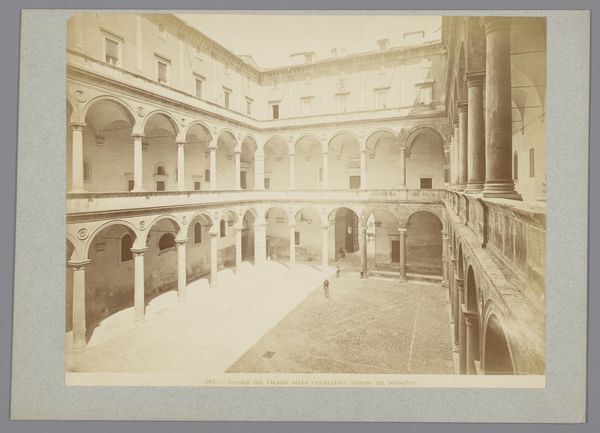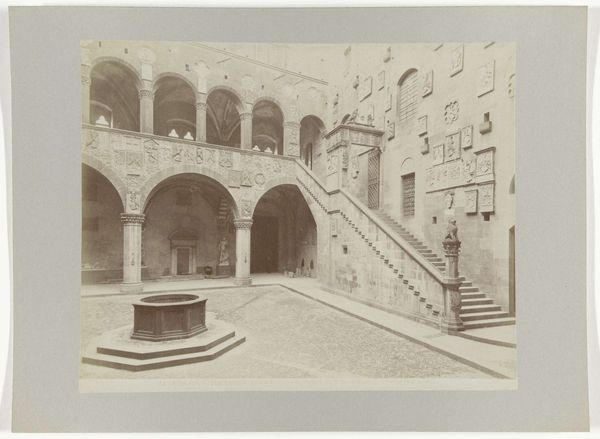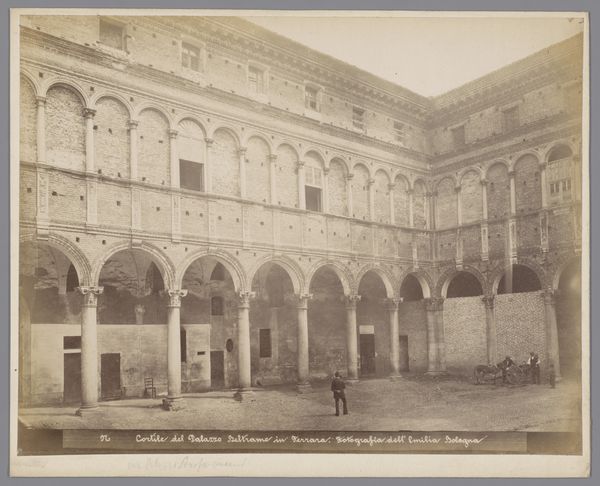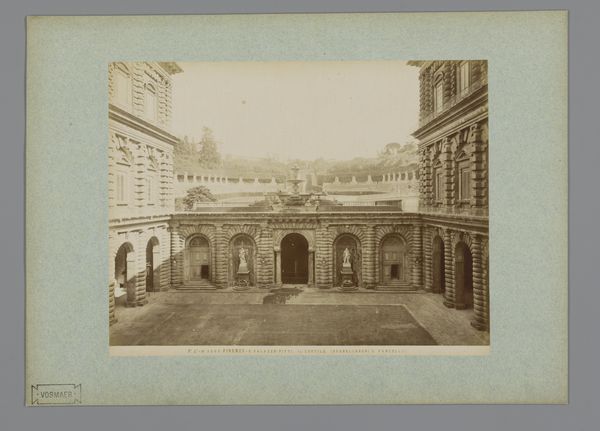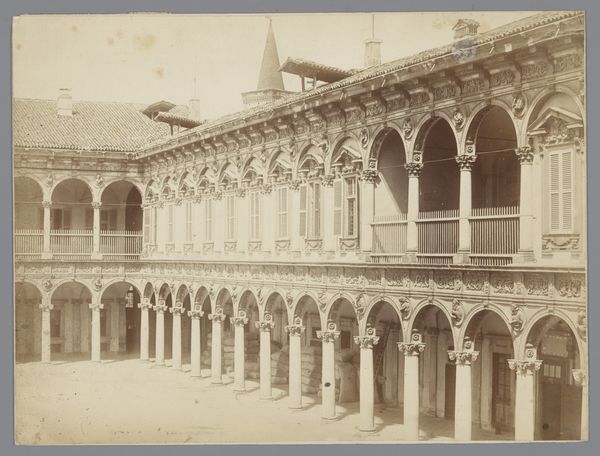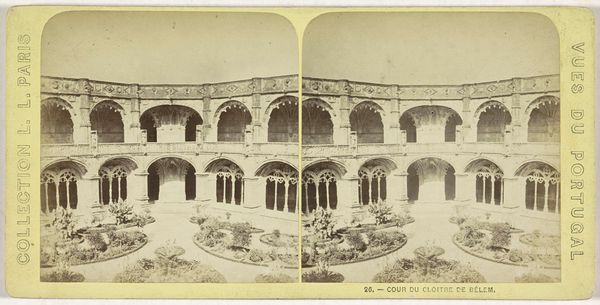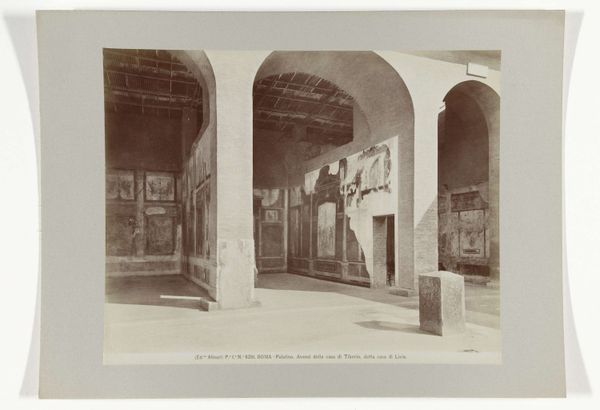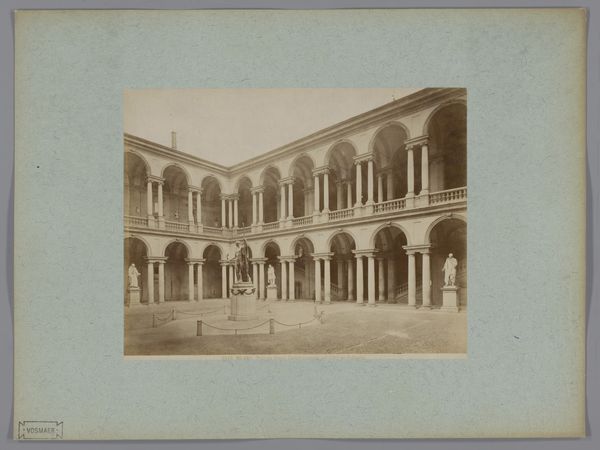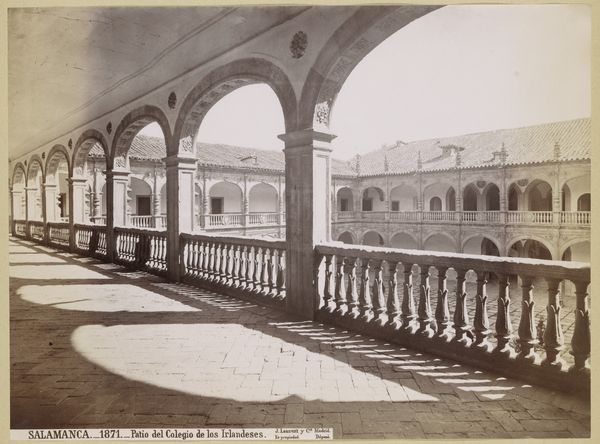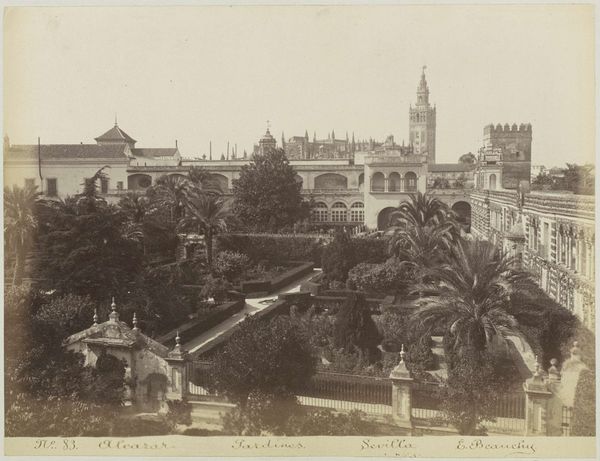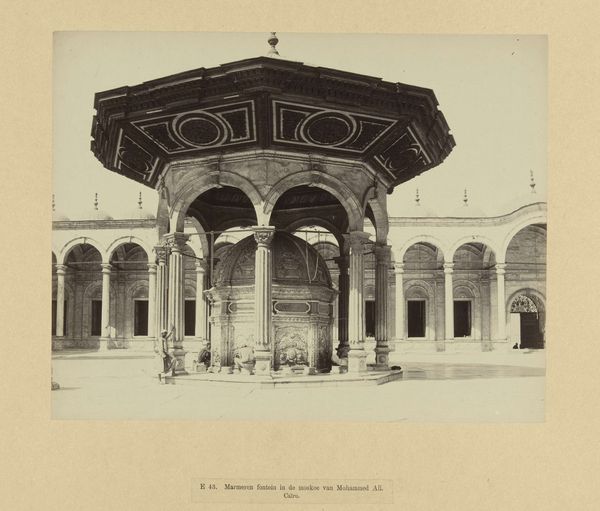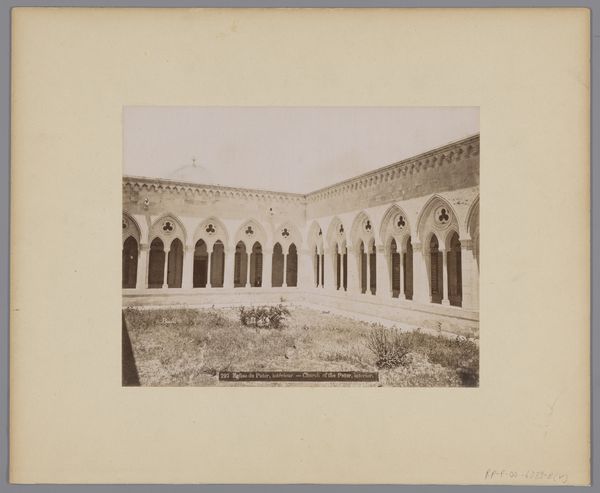
Loggia di Santa Maria della Misericordia te Florence c. 1880 - 1895
0:00
0:00
print, photography, albumen-print, architecture
# print
#
landscape
#
photography
#
cityscape
#
albumen-print
#
architecture
Dimensions: height 197 mm, width 249 mm, height 241 mm, width 328 mm
Copyright: Rijks Museum: Open Domain
Editor: This albumen print, taken by Fratelli Alinari between 1880 and 1895, shows the Loggia di Santa Maria della Misericordia in Florence. I'm immediately struck by the symmetry and how it evokes a sense of almost theatrical grandeur, but also a sense of the photographer’s distance from the actual space, or perhaps a distance from what it was like during the Renaissance, what do you see in this piece? Curator: The photograph itself becomes a fascinating document. The camera's eye captures a built environment intended to project power and control; you've immediately picked up on the way in which the print presents distance, both spatial and temporal. But I am curious to think more about the idea of distance. What purpose might be served by producing images such as these? For whom were such images intended and what fantasies or longings might they evoke in the intended audience? Editor: I imagine this photograph catered to tourists, or those who wanted to explore but couldn’t physically visit, or were Italian immigrants seeking to keep a sense of what they were homesick for. It also immortalizes the site, almost enshrining its significance in paper. Curator: Exactly! The production and dissemination of these photographs served a purpose—to codify and reinforce existing power structures. Tourism becomes complicit when its consumption is based on existing notions of cultural superiority or exclusion. Also, keep in mind photography’s early connections to both scientific positivism, imperialism, and the rise of nation-states, all tangled up together. Can photography ever *not* be implicated in questions of power and social hierarchy? Editor: That's something I haven't thought of before; I usually consider the aesthetic qualities, but the social implications are important to unpack. It changes how I view even landscape photography. Curator: It should! Our task as critical viewers is to remain ever conscious of the implicit power dynamics at play in these visual representations. Seeing beyond the veneer is not just about aesthetics; it's a conscious effort toward equity.
Comments
No comments
Be the first to comment and join the conversation on the ultimate creative platform.
